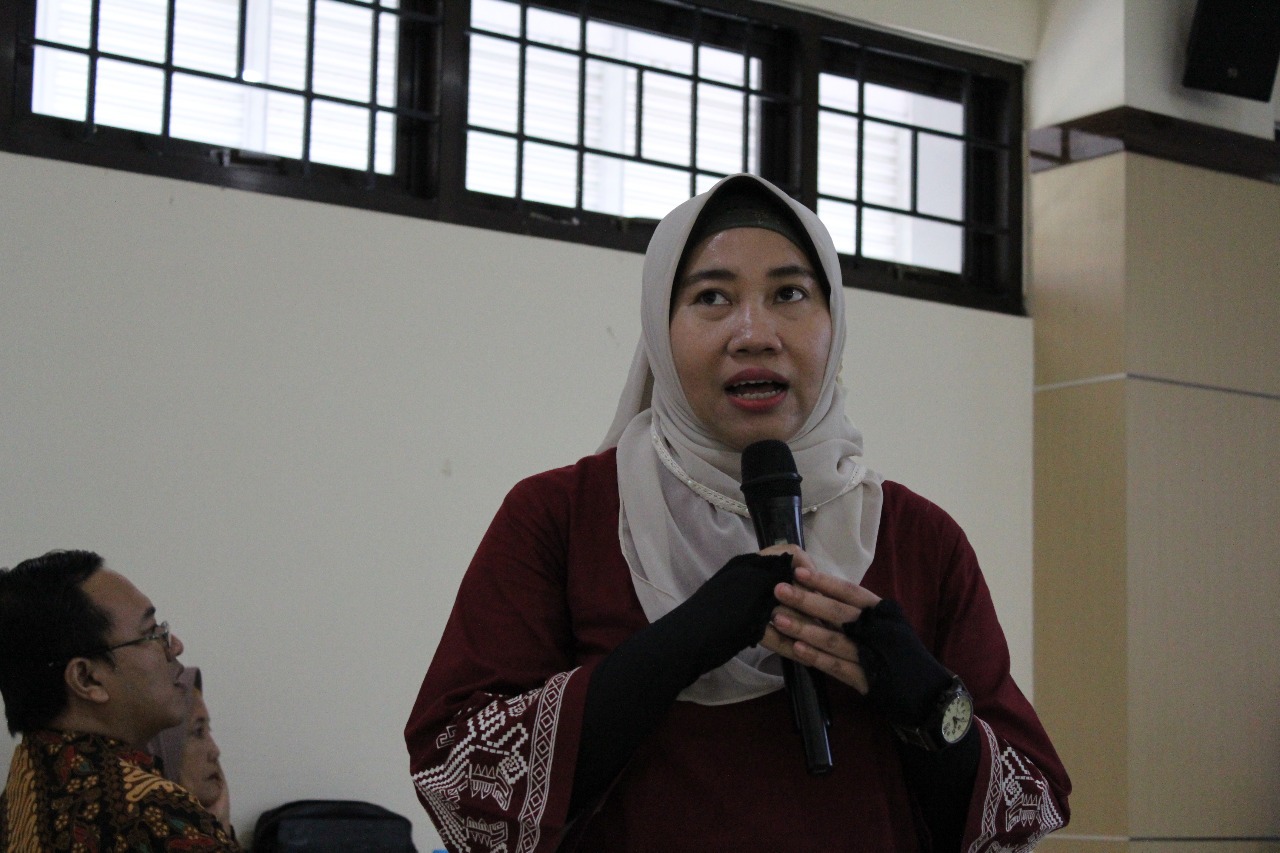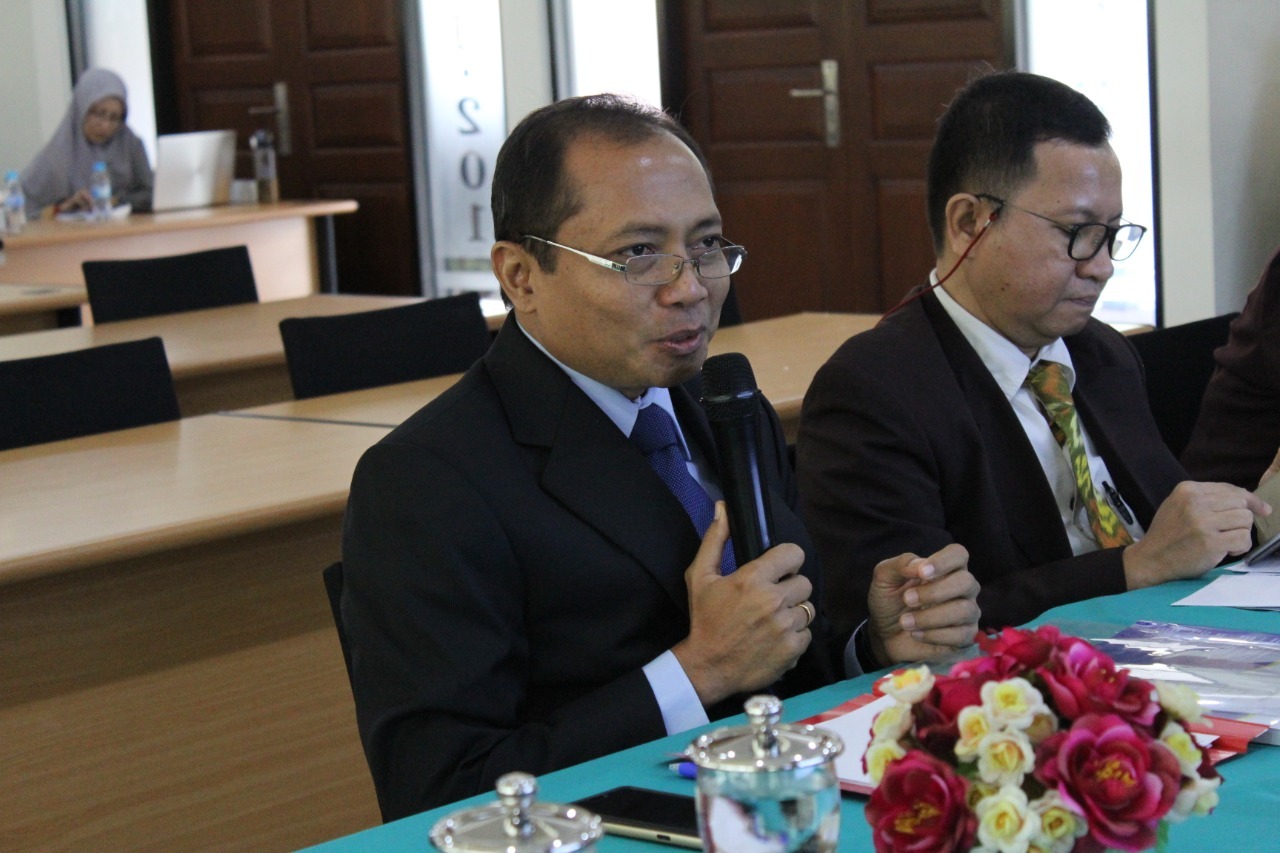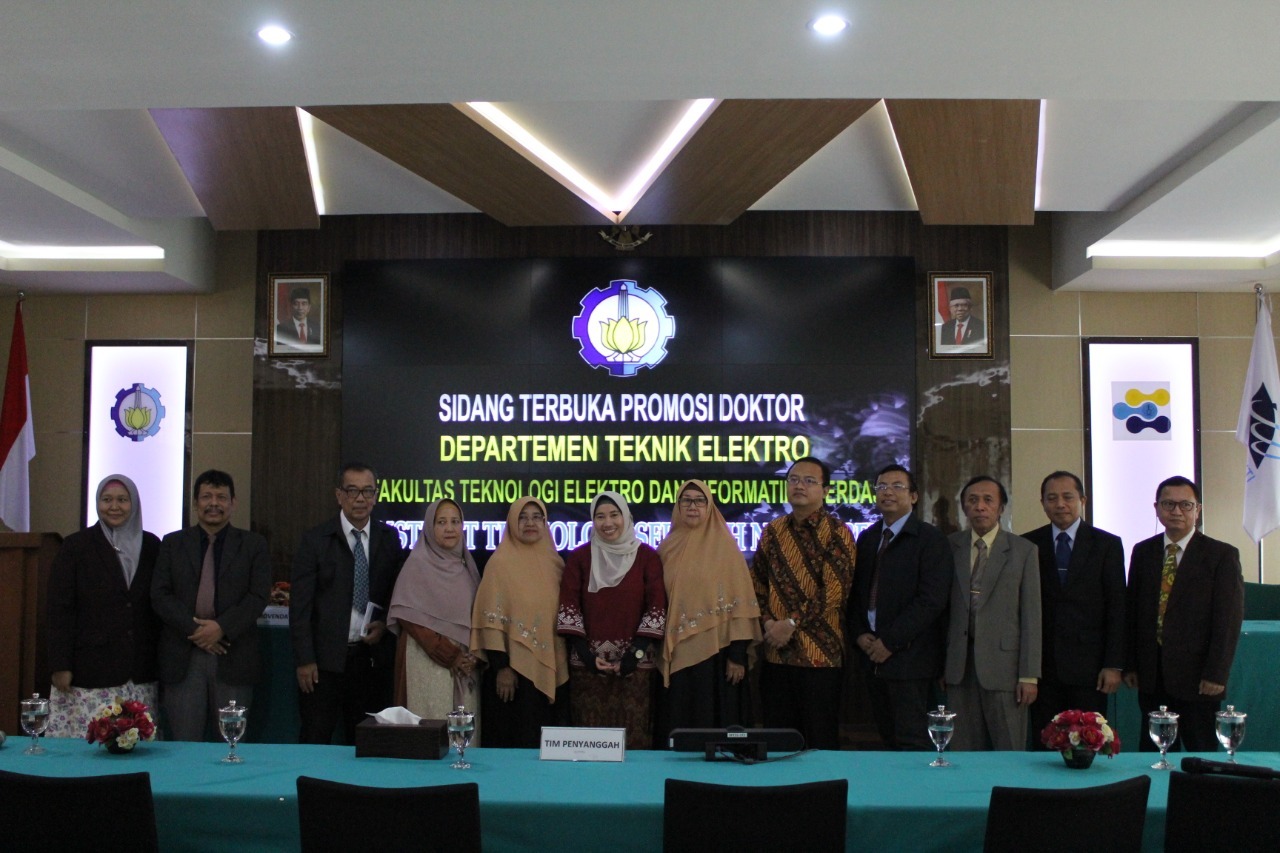Doctoral ITS Create BehavEx Model As An Expertise Indexer System

Diana Purwitasari when presenting her dissertation in the open session of doctoral promotion in Department of Electrical Engineering ITS
ITS Campus, ITS News – towards world-class status, many researchers in Indonesia have been competing to publicize their research to be internationally indexed. This trend is what makes the doctoral program of the Department of Electrical Engineering Institut Teknologi Sepuluh Nopember (ITS), Diana Purwitasari, researched the performance and expertise of researchers to dissertation.
Diana said the Indonesian government is pushing the culture of publication to improve the research climate. No doubt, that is because the position of Indonesia is considered to be lagged comparing to other countries in publishing scientific journals as well as international seminars. The research for his dissertation was addressed in the open session of the doctoral promotion, last February.
To improve the results of high competitiveness, said Diana, Indonesia seeks to improve the sustainable development of the Science and Technology Index (SINTA). SINTA itself is present as a measure of the performance of researchers, journals, and related institutions in field of science and technology.
Furthermore, the scholarship recipient of the Lembaga Pengelola Dana Pendidikan (LPDP) 2016 explained that the actual features of SINTA have been supplemented with performance scores of researchers from the Scopus and Google scholar indices. But similar to H-index, SINTA is still focused on the number of publications and citations. “I researched, the H-index of some researchers soared so that the curve is abnormal,” said Diana while presenting the curve of her research results.
This mother of one child is considering the abnormal shape of the curve to be suspected of being an indicator of a cartel citation. The citation cartels occur due to excessive citations which are no longer being done by individuals, but groups which increasing the H-index.

Dr. I Ketut Eddy Purnama as the examiner’s team at the open session of the doctoral promotion when asking Diana Purwitasari a question
According to Diana, the citation cartels can occur through two approaches. The first is gift authorship, which is a persuading to be cited for friends and colleagues. While the second through a coercive approach, that is a compulsion. “The topic is actually not one hundred percent equal or not too close together, but because of one and the other and there is a name entered or cited,” said the woman who completed her master’s program in Saga University, Japan.
Also, Diana continues, there is another problem that is changing one’s interest in the field of research (interest change). One’s interest can indeed change from time to time due to the influence of other researchers, especially if the ongoing collaboration is done. Therefore, an instrument is required that can measure one’s expertise in a particular field.
Behind these problems, Diana finally conducts the research Behaviour for Expertise (BehavEx) Model. BehavEx This Model is an expertise performance indexer system equipped with a measurement method of performance that takes into account the motivation of researchers from the culture or behavior of publications in the field.

Diana Purwitasari with her family, supervising lecturer, and examinator team after the open session of doctoral promotion
“This research is done to examine the habit of writing and not content. The content is also researched, but not based on quality but rather the consistency of the content itself from each year, “said the hijab woman.
Diana states, BehavEx Model has 17 features that one of them is a feature of dynamism productivity and behavior (exploration or consistency). The required steps are four, ranging from topic identification (clustering), research network analysis, feature extraction, to rank expertise.
Before closing his scientific oration, Diana concluded that the BehavEx Model can extract features that focus on changing research areas and not overly focused on the citation. Because of this excess anyway, Dr. I Ketut Eddy Purnama of the examinator team said BehavEx Model of Diana’s creation to be applicable in ITS later.
Responding to this, Diana expressed her readiness to further analyzing before being applied at ITS. She hopes, BehavEx Model creation can be applied in ITS sphere first as an example. “If it is okay, can be lifted to the national,” she said. (ra/rev/ITS Public Relations)
Related News
-
General Director of Diktiristek Inspects UTBK at ITS
ITS Campus, ITS News — Institut Teknologi Sepuluh Nopember (ITS) proves its commitment to providing the best facilities for
March 06, 2020 23:03 -
Competing Strictly, 9,936 Participants Attend UTBK SNBT 2024 at ITS
ITS Campus, ITS News — Starting its implementation, Institut Teknologi Sepuluh Nopember (ITS) as one of the Computer-Based Written
March 06, 2020 23:03 -
Passing Leadership to ITS, PTN-BH MWA Forum Formulates RPP RI for Higher Education Implementation
ITS Campus, ITS News — Institut Teknologi Sepuluh Nopember (ITS) Surabaya hosted the National Gathering of the Forum of Trustees
March 06, 2020 23:03 -
Inaugurates New Chancellor, ITS Affirms Itself as a Sustainable University
ITS Campus, ITS News — Institut Teknologi Sepuluh Nopember (ITS) once again experienced the historic moment of inaugurating the new
March 06, 2020 23:03
